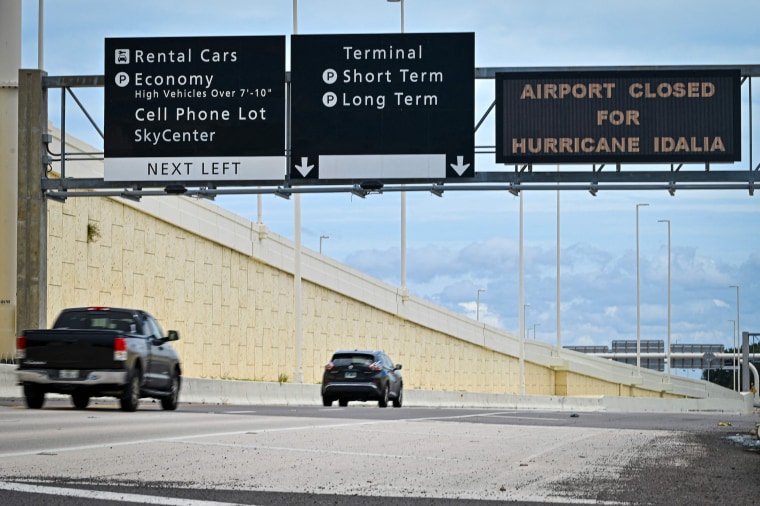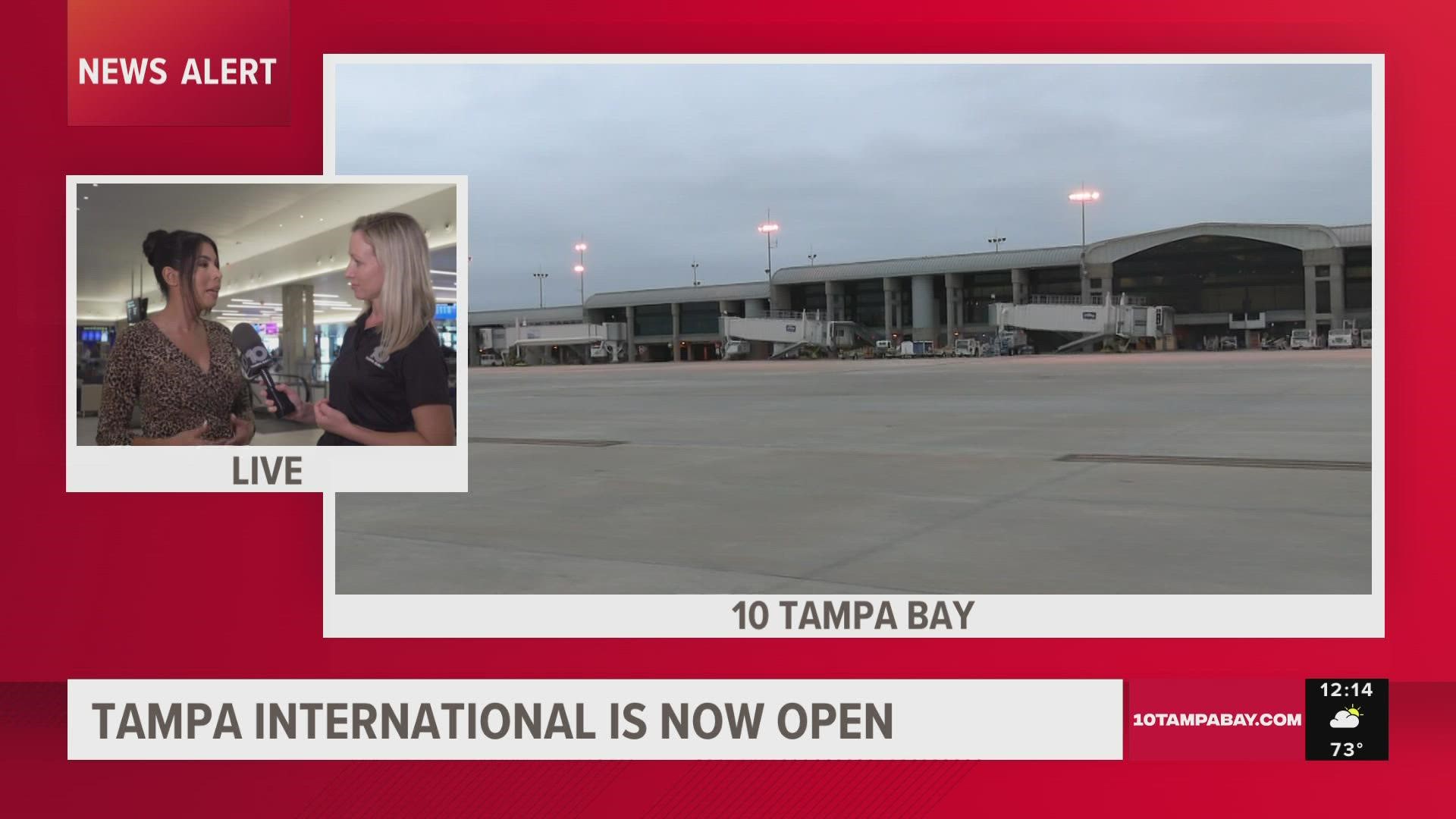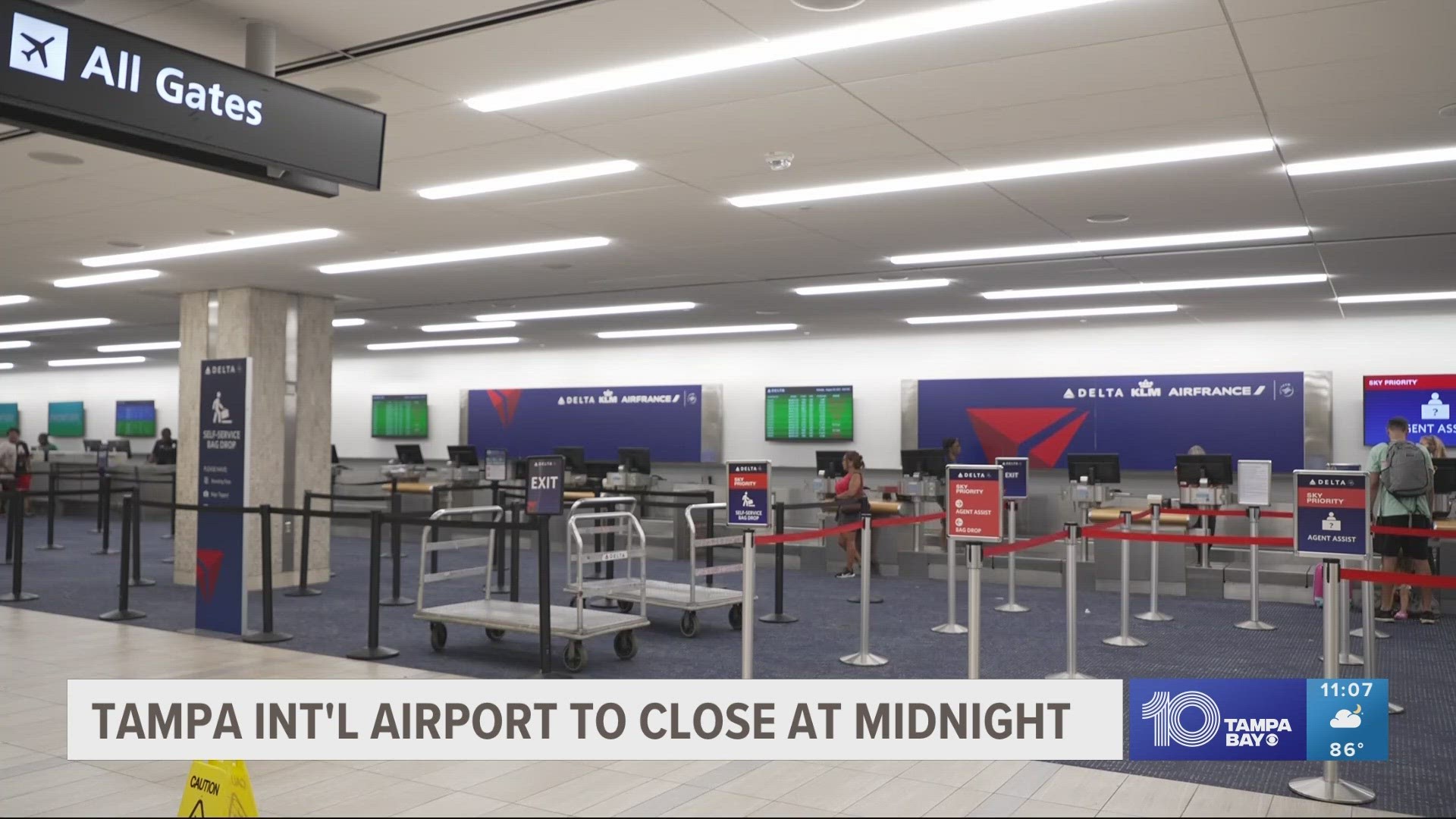Tampa Airport Reopening: What We Know After Hurricane [Date]
Wondering when you can finally catch your next flight out of Tampa? The reopening of Tampa International Airport (TPA) is imminent, with officials poised to unveil their plan, offering a glimmer of hope for travelers disrupted by recent closures.
The airport, a vital transportation hub for Florida and beyond, has been shuttered since Tuesday, leaving countless passengers stranded and travel plans in disarray. This closure, initially prompted by the looming threat of Hurricane Idalia and subsequently followed by Hurricane Milton and Hurricane Helene, allowed airport personnel to secure the premises and minimize potential damage. The decision to suspend operations was not taken lightly, with TPA officials prioritizing the safety of both travelers and staff.
| Airport Information | Details |
|---|---|
| Airport Name | Tampa International Airport (TPA) |
| Location | 4100 George J. Bean Pkwy, Tampa, FL 33607, US |
| Status | Closed since Tuesday (various dates in late August/early September and late September/early October 2024, depending on the hurricane) |
| Reason for Closure | Hurricanes (Idalia, Milton, Helene) |
| Expected Reopening (Initial) | Friday after damage assessment (multiple instances) |
| Reopening Plan Announcement | October 10 (for one instance) |
| Official Website | news.tampaairport.com |
| Social Media Incident | Official account on X (formerly Twitter) and Facebook posted about shutting down. |
| Damage Assessment | Conducted early Friday mornings after storms. |
| Significant Damage | Determined to have no significant damage from at least one storm. |
Reference: Tampa International Airport News
- Is Atlas Intel A Good Poll Latest Insights Findings
- Tanner Adell Tour 2024 Dates Buckle Bunny Merch Updates
Following each closure, a thorough damage assessment has been the top priority. Teams of airport operations staff have meticulously inspected the airfield, terminals, and infrastructure to identify any potential hazards or structural issues. These assessments are crucial in ensuring the airport's readiness to safely resume operations. As officials announced, the closure allowed ample time to secure jet bridges, ground equipment, and other remaining items to prevent damage from strong winds and potential flooding.
The initial announcement of a reopening plan was slated for October 10, following a complete inspection. However, due to the unpredictable nature of hurricane season, the airport faced repeated closures and subsequent assessments. The primary objective has always been to reopen as swiftly and safely as possible, with officials expressing an initial expectation of reopening on Fridays after each storm, contingent on the findings of the damage assessments. The closure impacted not only commercial operations but also cargo flights, further disrupting supply chains and logistical operations across the region.
While the main terminal and airsides remained closed to the public, it's crucial to note that the airport was not equipped to serve as a shelter for people or vehicles during the storms. This point was emphasized to avoid confusion and ensure that residents sought appropriate shelter elsewhere. The airport recognized its role as a critical transportation hub, and the swift resumption of operations was seen as vital to facilitating the movement of people and goods in the aftermath of the storms.
- Breaking Naked Trump Statue Appears In Phoenix Arizona Latest News
- Doordash Super Bowl Sweepstakes All The Ads Win Big
The ripple effects of these closures extended beyond Tampa International Airport. Several smaller airports in the surrounding area also temporarily suspended operations, compounding the travel disruptions. Sarasota Bradenton International Airport, for example, remained closed through Friday in one instance, mirroring the challenges faced by TPA. These coordinated closures highlight the widespread impact of hurricanes on the region's aviation infrastructure.
In the lead-up to each storm, Tampa International Airport implemented comprehensive precautionary measures. These included securing jet bridges to prevent wind damage, stowing away ground equipment to minimize the risk of debris, and diligently preparing the airfield to withstand the anticipated weather conditions. These proactive steps were essential in mitigating potential damage and ensuring a faster recovery once the storms had passed.
In one particular instance, Tampa International Airport faced scrutiny when its official social media accounts on X (formerly Twitter) and Facebook posted a statement indicating that the airport was "not an airport at all anymore." This message caused considerable confusion and concern among travelers, prompting the airport to clarify the situation and reassure the public about its commitment to resuming operations as soon as it was safe to do so. The incident underscores the importance of clear and accurate communication during times of crisis.
The situation was further complicated by various factors, including scattered debris and instances of flooding at the airport. These challenges required prompt and effective responses from airport personnel to ensure the safety of the premises and facilitate the resumption of operations. Despite these obstacles, the airport's commitment to providing a safe and efficient travel experience remained unwavering.
Even before the full closures, Tampa International Airport experienced significant flight delays. On one Monday, outbound flight delays steadily increased throughout the day, with over 60 flights delayed by 9:30 p.m., according to flight tracker FlightAware.com. These delays served as a precursor to the complete suspension of operations and highlighted the growing impact of the impending storms on air travel. These initial delays created ripple effect throughout the entire air travel network, with downstream consequences for passengers and airlines alike.
The coordinated efforts of TPA officials and its partners were critical in navigating the challenges posed by the hurricanes. Their proactive measures, diligent assessments, and commitment to safety were instrumental in minimizing damage and facilitating a swift resumption of operations. The airport recognizes the vital role it plays in the region's economy and transportation network, and its commitment to providing a safe and efficient travel experience remains unwavering.
The repeated closures of Tampa International Airport served as a stark reminder of the vulnerability of coastal regions to severe weather events. The experience underscores the importance of robust infrastructure, proactive planning, and coordinated responses to mitigate the impact of hurricanes and other natural disasters. Moving forward, Tampa International Airport will likely continue to refine its emergency preparedness plans and invest in infrastructure improvements to enhance its resilience to future storms.
The airport's administration consistently provides updates, which can be found on their official website, news.tampaairport.com, giving up-to-date information and press releases. These resources offer real-time insights into the status of the airport, including reopening timelines, flight schedules, and any other relevant information. Passengers are encouraged to check these resources frequently for the most current information.
Each period of suspended commercial and cargo operations was a delicate balancing act, weighing safety and efficiency of reopening as soon as possible, because each closure resulted in massive delays of supply chains across the state of Florida and surrounding areas, impacting all industries from tourism to imports and exports. This included the securing of critical infrastructure like jet bridges and ground equipment, which was vital in reducing the cost of possible damage.
While the airport won't function as a storm shelter, local authorities provided alternative accommodations during hurricane season. The airport's officials reiterated the message that the airport terminals and grounds were not designed nor equipped to host large populations of citizens looking for safe harbor during severe weather conditions. This message was intended to encourage individuals to seek out suitable shelters that could provide the appropriate accommodations and protection needed during a hurricane.
In one instance, Tampa International Airport closed at 9:00 a.m. on a Tuesday, a day prior to when Hurricane Milton was forecasted to make landfall as a catastrophic storm. The incident served as an example of the precautions taken by Tampa Airport officials to keep the public safe in anticipation of life-threatening storm conditions. These preventative measures were essential to ensuring the safety of both staff and passengers.
Despite the disruptions, the local community has shown resilience. Regular updates from the airport helped in planning and preparations, and the understanding and support of local business owners and residents was essential in making it easier to get back to normalcy once the immediate threat had passed and authorities had determined that a safe reopening was possible. This communal effort highlights the strength and unity in the face of adversity.
As of now, the exact reopening date after the most recent closure remains uncertain, but officials are committed to providing timely updates and ensuring a smooth resumption of operations. Travelers are encouraged to monitor the airport's official website and social media channels for the latest information. The safety and well-being of passengers and staff will continue to be the top priority as the airport prepares to welcome back travelers from around the world.
Looking ahead, Tampa International Airport is expected to implement enhanced safety measures and invest in infrastructure improvements to better withstand future storms. This will include fortifying critical infrastructure, improving drainage systems, and enhancing communication protocols to ensure that travelers remain informed and safe during severe weather events. The lessons learned from these recent closures will undoubtedly shape the airport's long-term planning and preparedness efforts.
In addition to physical improvements, Tampa International Airport may also explore innovative strategies for managing travel disruptions during hurricane season. This could include implementing flexible ticketing policies, providing real-time flight updates, and offering alternative transportation options to minimize passenger inconvenience. By proactively addressing the challenges posed by severe weather, Tampa International Airport can further solidify its reputation as a world-class transportation hub.
The series of hurricane-related closures has not only impacted air travel but also highlighted the importance of business continuity planning for companies operating in the Tampa Bay area. Businesses of all sizes have been forced to adapt to supply chain disruptions, employee absenteeism, and other challenges. Those that have invested in robust business continuity plans have been better positioned to weather the storm and maintain operations with minimal disruption.
Furthermore, the recent events have underscored the need for enhanced coordination between government agencies, private sector organizations, and community groups in preparing for and responding to natural disasters. By working together, these stakeholders can ensure that resources are effectively deployed, communication is clear and consistent, and the needs of the community are met in a timely manner.
While the immediate focus remains on reopening Tampa International Airport and restoring normalcy to air travel, the long-term implications of these events will continue to be felt throughout the Tampa Bay region. The experience has provided valuable lessons about the importance of preparedness, resilience, and collaboration in the face of adversity. As the region moves forward, it will be essential to apply these lessons to build a stronger and more resilient community.
For now, the question on everyones mind remains: When will Tampa International Airport reopen? While an exact date is still pending, the airports unwavering commitment to safety and efficiency provides a beacon of hope for travelers eager to resume their journeys. The moment they announce a final reopening date, the entire Tampa Bay area will breathe a sigh of relief.

Hurricane Idalia leaves behind a travel mess as shuttered Florida airports reopen

Tampa International Airport reopens after closing due to Hurricane Ian wtsp

Tampa International Airport to shut down ahead of Idalia wltx